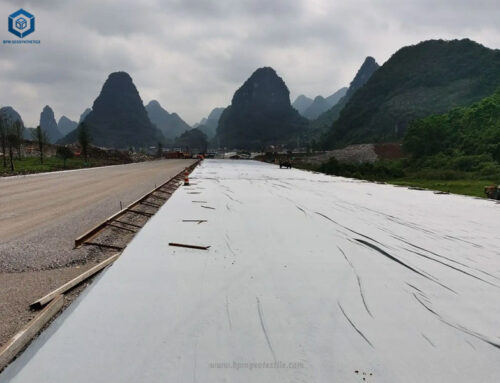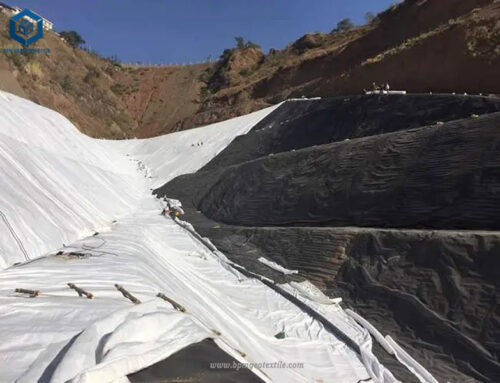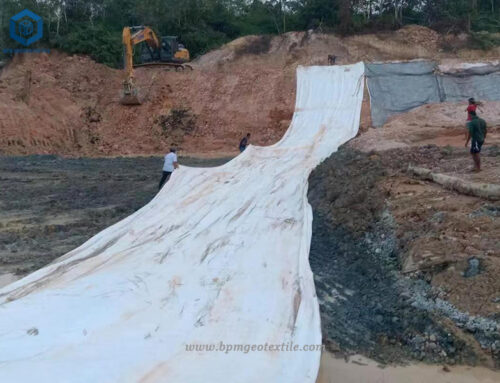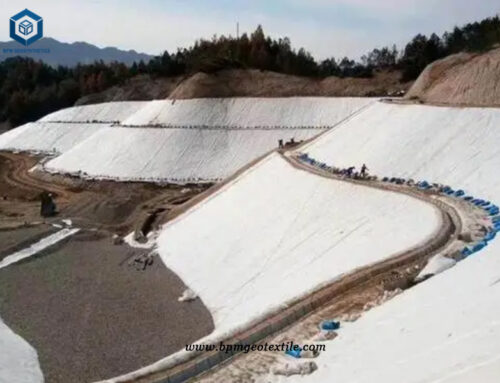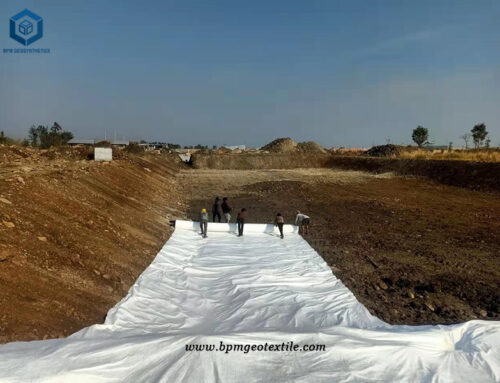Short fiber needled punched geotextile fabric is a kind of nonwoven and industrial cloth. Polyester crimp staple fiber with fiber fineness of 6-12 denier and length of 54-64mm is used as raw material. The needle geotextile punched fabric cloth is made by the process of non-woven production equipment, such as opening, combing, cluttering (short fibers interwoven together), netting (normalized tangling and fixation), needling and so on. The non-woven needle geotextile fabric is mainly used in railway roadbed reinforcement, highway pavement maintenance, sports hall, dam protection, hydraulic construction isolation, tunnel, coastal beach, reclamation, environmental protection and other projects.
Nigeria sparda Greg instant company got a project, the phase ii has total length of 14.8 meters high, 10 lanes, is connected to Nigeria, benin, Togo, Ghana and ivory coast in west Africa is an important part of the coastal highway, one paragraph or marsh, facilities under construction subgrade reinforcement and bearing capacity of flexible working hours should be considered. Problems such as drainage and cracking after construction, and the Nigerian construction standard adopts the American standard. The construction technology according to local conditions put into test to seek a reasonable construction method ensuring that the roadbed has the desired structural function and working performance. The short fiber needle punched geotextile has the characteristics of good water absorption and permeability, high tensile strength, deformation resistance, which makes it the ideal geotechnical material for subgrade construction.
Staple fiber needle punched geotextile fabric is made of polyester, polypropylene or polyamide staple fiber as raw material, processed by wool, flow, net laying, needling and compound needling. It is characterized by high density, fluffy structure, corrosion resistance, aging resistance, acid and alkali resistance, good water absorption and permeability, high tensile strength, deformation resistance. It is suitable for strengthening flexible roadbed, preventing and controlling road surface turning over, slope protection, canal protection layer and other projects.
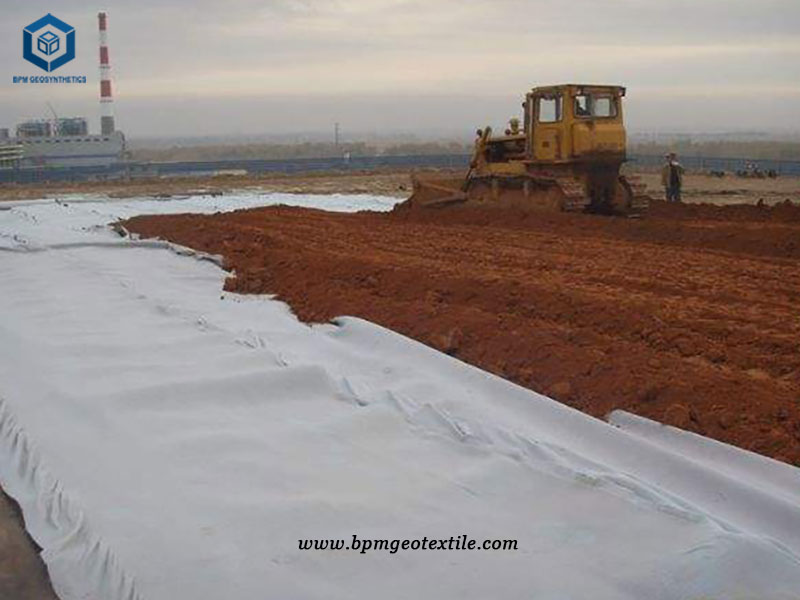
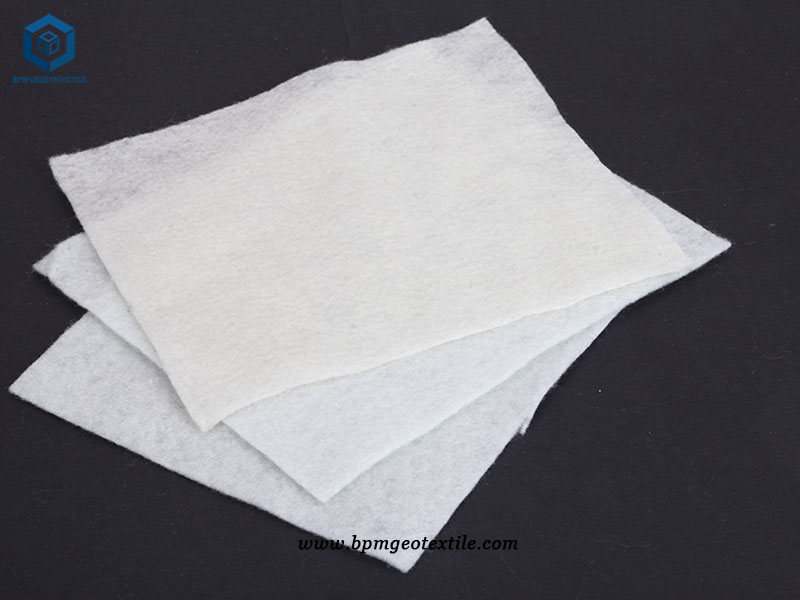
Nigeria highway construction company contacted our BPM professional salesman through our website, by way of video introduction for the situation of the highway construction project, and provided samples and technical indicators, BPM salesman showed outstanding 250 grams of PP short fiber punched geotextile samples according to the requirements of the customers. The customer requested to send samples and provide details of the third party inspection report, we all met the requirements of the customer.
After the customer received the sample, he conducted the test again, and the indicators fully met the customer’s project requirements, and finally chose 200 grams of staple fiber non-woven geotextile. After one month of communication and negotiation, the customer finally purchased 100,000 square meters. Short fiber needle punched geotextile fabric has the following characteristics.
- High strength, due to the use of plastic fiber, in the dry and wet state can maintain full strength and elongation.
- Good corrosion resistance, in different ph of soil and water can be long corrosion resistance.
- Excellent water permeability in the fiber gap, so there is good water seepage performance.
- Good microbial resistance to microorganisms, moth are not damaged.
- The construction is convenient, because the material is light and soft, so the transportation, laying, construction is convenient.
- Complete specifications. Width up to 9 meters. Is the widest product in China, unit area quality: 100-1000 gsm.
Needle Punched Geotextile Fabric Functions and Effects
- The construction materials with different physical properties (particle size, distribution, consistency and density, etc.) were needle punched with polyester staple fiber geotextile. Materials (such as soil and sand, soil and concrete, etc.) are isolated. Make two or more materials do not run off, do not mix, keep the material. The overall structure and function of the material strengthen the loading capacity of the structure.
- Filtration (reverse filtration). When the water from the fine soil into the coarse soil, the use of polyester staple fiber needle geotextile good air permeability and permeability, so that water flow can effectively intercept soil particles, fine sand, small stone, etc., to maintain the stability of soil and water engineering.
- Drainage. Short fiber needle punched geotextile has good water conductivity, it can form drainage channel inside the soil, the soil structure more residual liquid and gas are discharged.
- Reinforcement. Using Short fiber needle punched geotextile to enhance the tensile strength and anti-deformation ability of soil and enhance the stability of building structure. Good soil quality.
- Protective. When the soil is scoured by water flow, the concentrated stress can be effectively diffused, transmitted or decomposed to prevent the soil from being destroyed by external force and protect the soil.
- Prevent puncture. Combined with geomembrane, the composite waterproof and impermeable material plays a role in preventing puncture.
- High tensile strength, good permeability, air permeability, high temperature resistance, freezing resistance, aging resistance, corrosion resistance, moth – free. Short fiber needle punched geotextile are widely used geosynthetics.
- Wide range of applications. Staple fiber needle punched geotextile fabric is widely used for reinforcing railway subgrade and highway pavement Maintenance, sports hall, dam protection, isolation of hydraulic construction, tunnel, coastal beach, reclamation, environmental protection and other projects.
Laying method of staple fiber needle punched geotextile fabric.
- Staple fiber needle punched geotextile surface should be smooth, and appropriate deformation allowance.
- Filament or staple geotextile installation is usually lap, suture and welding methods. The width of suture and welding is generally more than 0.1m, and the lap width is generally more than 0.2m. Geotextiles that may be exposed for a long time should be welded or sutured.
- Geotextile suture. All stitching must be continuous (e.g., spot stitching is not allowed). Geotextiles must overlap at least 150mm before overlapping. Minimum stitching distance to selvage (exposed edge of material) is at least 25mm.
- The geotextile seams include 1 line of wired lock chain seam. The thread used for suturing shall be a resin material with a minimum tension of more than 60N and shall have chemical and uv resistance comparable to or exceeding geotextile. Any “missing stitches” in the stitched geotextiles must be re-sewn in the affected areas. Measures must be taken to prevent soil, particulate matter or foreign matter from entering the geotextile layer after installation. The lap of cloth can be divided into natural lap, seam or welding according to the terrain and function.
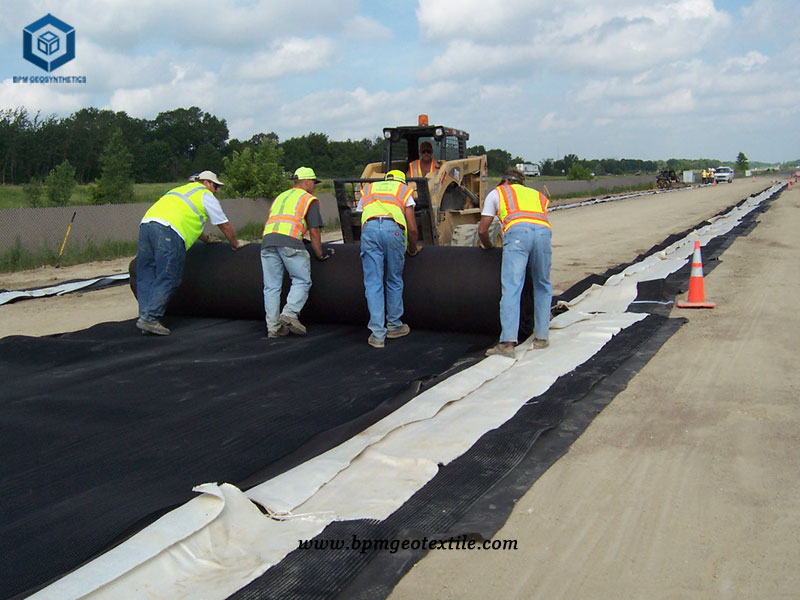
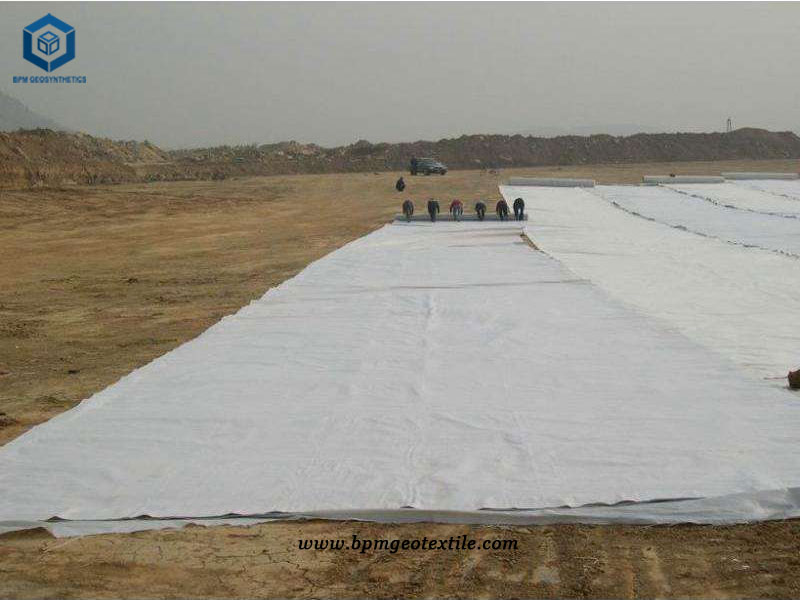
- In the construction, the geotextile above the geomembrane adopts natural lap, the upper layer of the geomembrane geotextile adopts seam or hot air welding. Hot air welding is the preferred connection method of filament geotextile, that is, to heat the connection of two pieces of cloth at high temperature instantly with a hot air gun, so that part of it reaches the melting state, and immediately use a certain external force to make it firmly glued together. In wet (rainy and snowy) weather can not be hot bonding, geotextile should take another method, a suture connection method, that is, a special sewing machine for double suture connection, and the use of anti-chemical uv suture line. The minimum width is 10cm for suturing, 20cm for natural lap and 20cm for hot air welding.
- When sewing, you should use the same quality and geotextile suture, suture to use chemical damage and uv radiation ability of stronger material.
- Geotextile laid by the site supervision engineer approval after laying geomembrane.
- The geotextile on the geomembrane is laid as above after the geomembrane is approved by Party A and the supervisor.
- The upper and lower layers of geotextile should be buried in the anchorage groove together with the geomembrane in the part of the anchorage groove.
Specifications of Short Fiber Needle Punched Geotextile Fabric for Road in Kenya
- Location – Nigeria
- Needle Punched Geotextile Quantity – 100,000 square meters
- Geotextile Weight – 250gsm
- Size – width 6m, Length 100m
- Color – White
- Application – Subgrade Construction
About BPM
BPM manufactures and wholesales many types of effective and states of the art geotextile, geomembrane, and other geosynthetics to over 36 countries. BPM geosynthetic products are widely used across a variety of industries including waste containment, water containment, aquaculture, industrial project, energy project and mining projects, etc. BPM main customers are from Australia, France, Sweden, UK, Hungary, New Zealand, Poland, Mexico, Ecuador, Brazil, Pakistan, Bangladesh, Thailand, Vietnam, Malaysia, Indonesia, Singapore, Philippines, Sri Lanka, India, UAE, Saudi Arabia, Qatar, Kenya, etc.
BPM is not only manufacturing best quality geosynthetic products but also providing professional design and installation service. OEM, ODM, custom development and fabrication are also available. If you have any questions or inquiries, please fill and submit the following form, we will reply as soon as possible.

